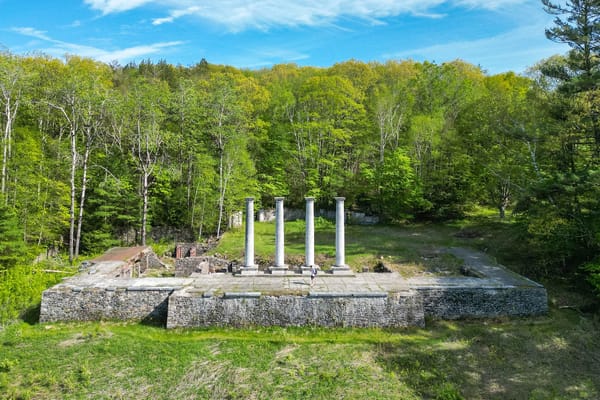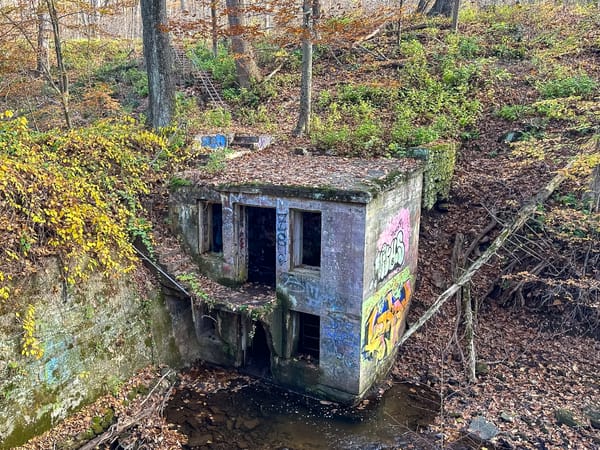Battery Greene-Edgerton (Newport, RI)
The abandoned Battery Greene-Edgerton in Newport, Rhode Island, was once one of the most ambitious coastal defenses ever built in New England.
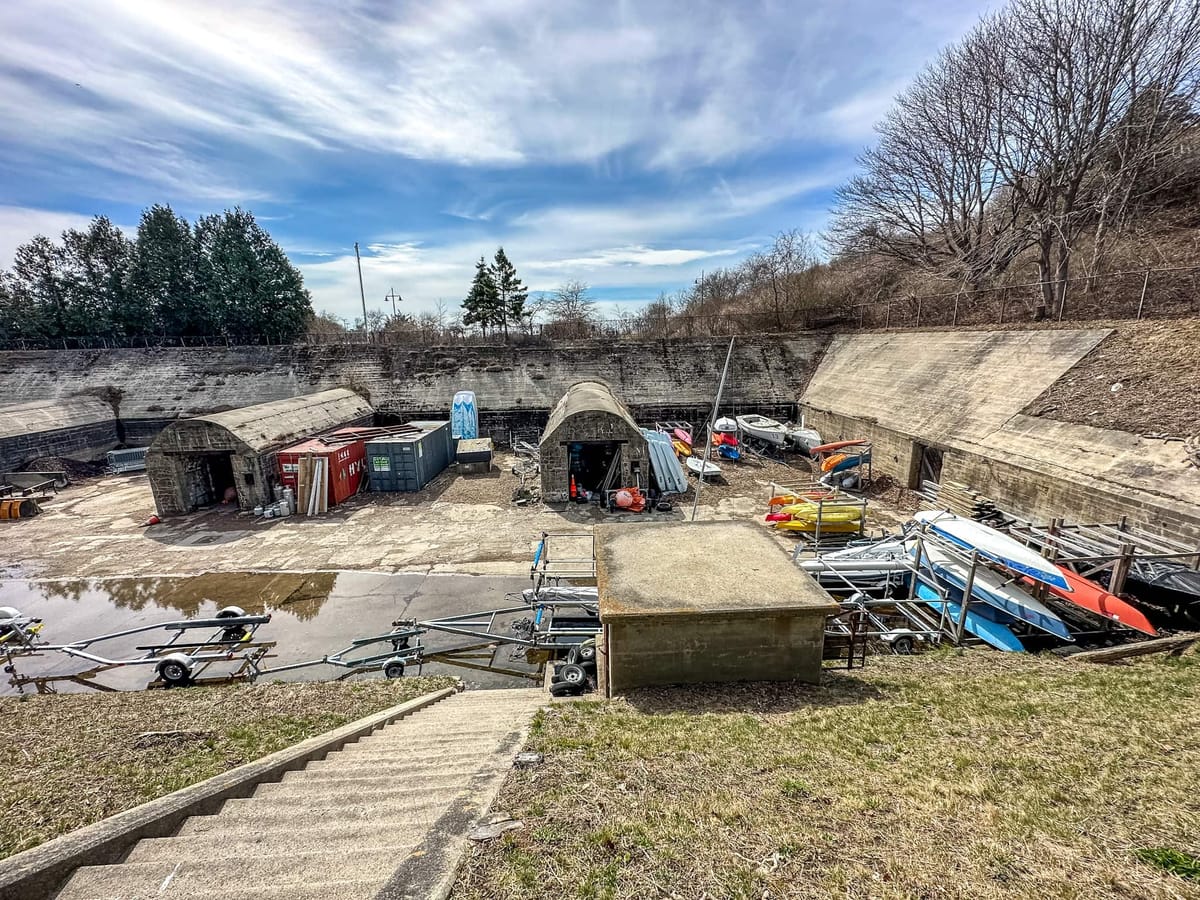
Tucked along the edge of Fort Adams State Park in Newport, Rhode Island, the immense concrete structure of Battery Greene-Edgerton stands as one of the most ambitious coastal defenses ever built in New England. Constructed during the Endicott Period (1890 – 1910), this sprawling mortar battery once formed the backbone of the Harbor Defenses of Newport, capable of raining massive shells across Narragansett Bay and the surrounding Atlantic waters.
Though closed to the public today, its sheer scale remains visible — a silent reminder of a time when Newport’s fortifications were among the strongest on the East Coast.
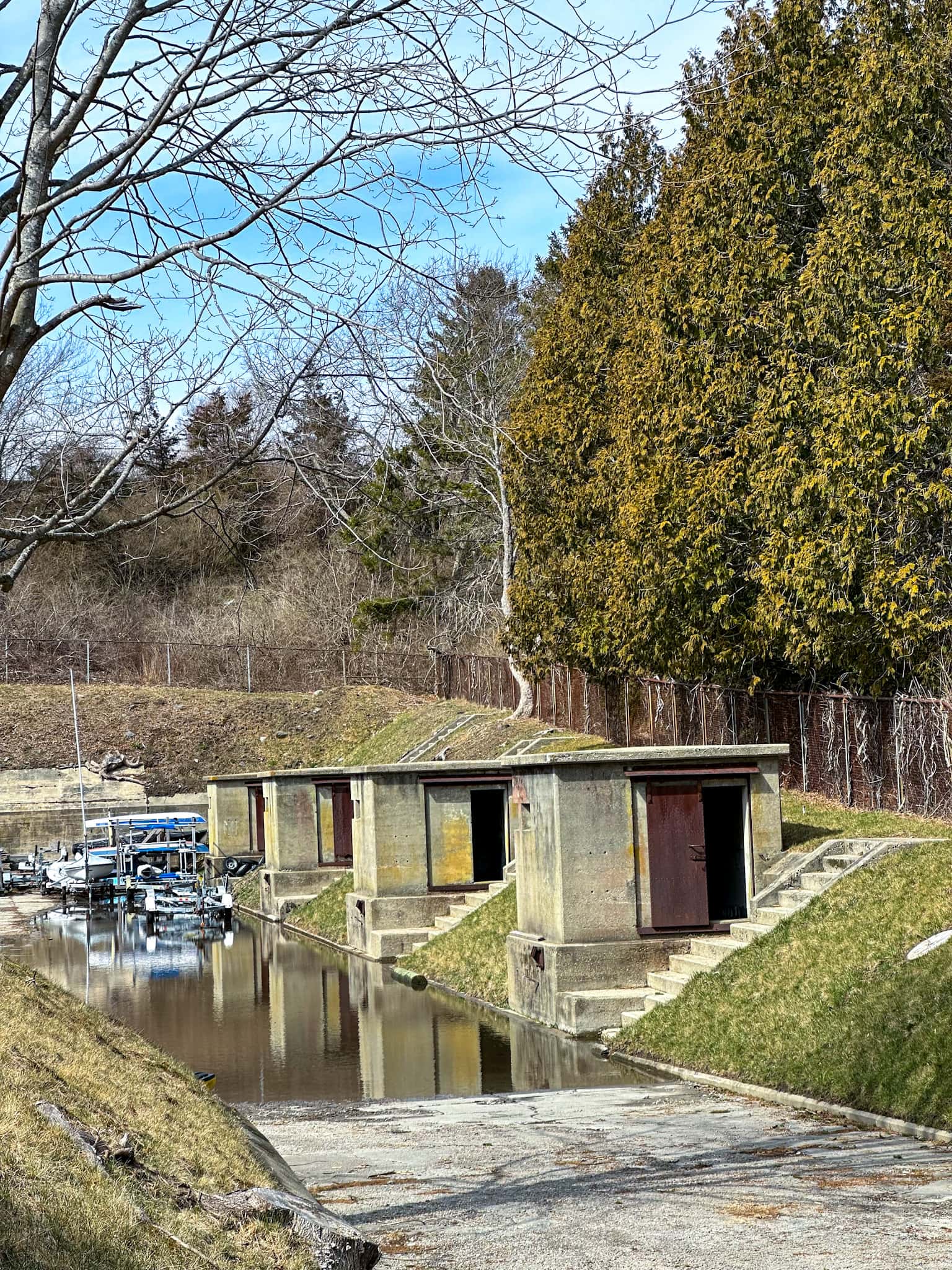
The Birth of Battery Greene-Edgerton
In the final decade of the 19th century, America’s aging brick forts were no match for new naval guns and steel-hulled ships. In 1885, the Endicott Board proposed a sweeping modernization of coastal defenses, leading to the creation of reinforced-concrete batteries armed with disappearing and mortar guns.
To strengthen Newport Harbor, construction of Battery Greene-Edgerton began in September 1896 and finished in June 1898. The U.S. Army Coast Artillery Corps placed it into service the following month, in May 1898, at a total cost of $63,350 — a significant investment for the era.
Originally known simply as Battery Greene, the battery honored Major General Nathanael Greene, the famed Rhode Island Revolutionary War hero who served under General George Washington.
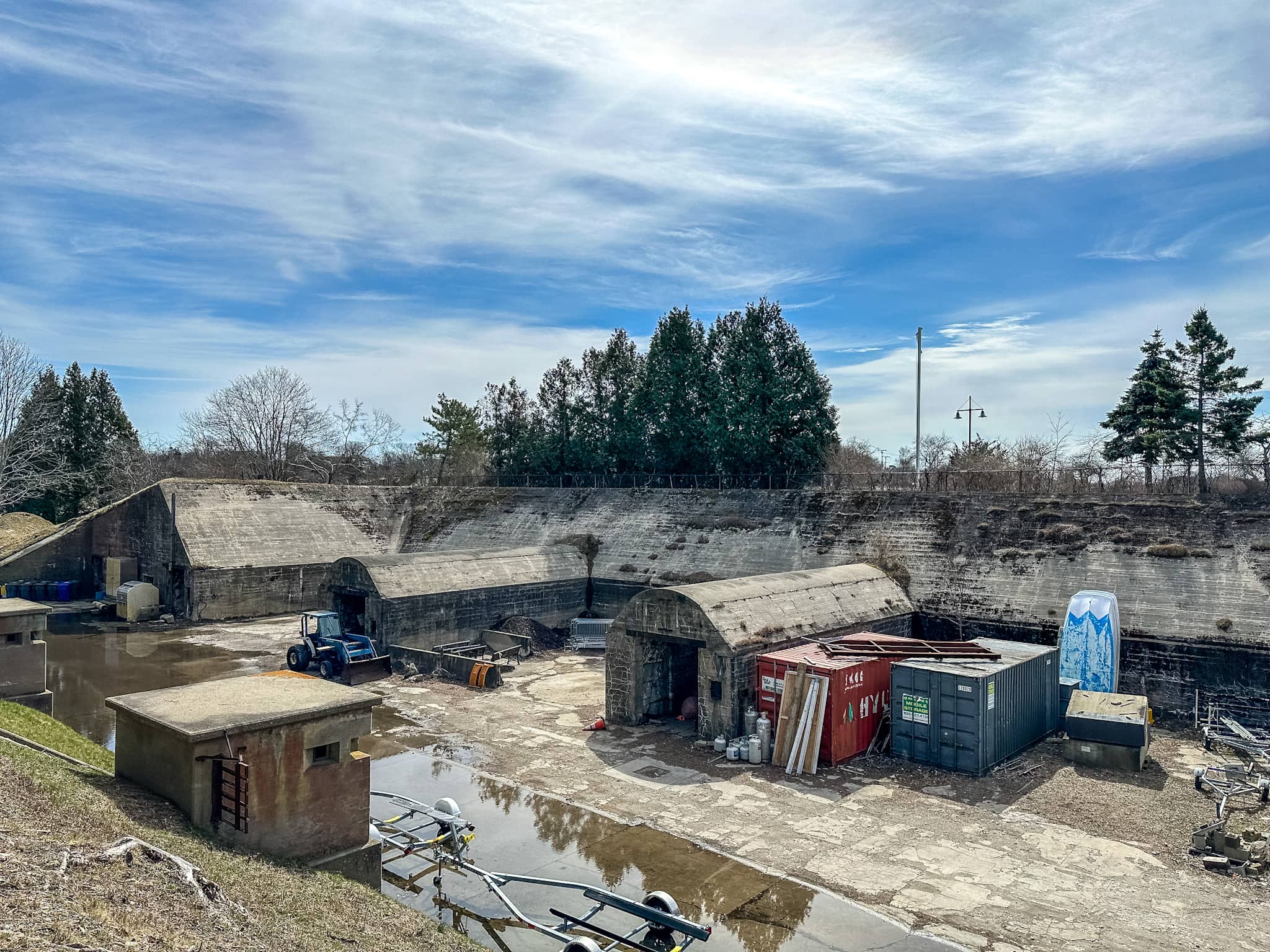
An Unusual and Powerful Design
Battery Greene-Edgerton was among the largest and most complex mortar batteries of the Endicott Period. It mounted sixteen 12-inch M1890-series mortars — fifteen M1890MI models and one M1890 — each set on M1896MI carriages arranged in four massive mortar pits.
- Pits A and B — operated as Battery Greene
- Pits C and D — operated as Battery Edgerton after 1906
Each pit contained four mortars positioned in a square, with ammunition magazines and shell rooms set behind protective concrete walls. These weapons could launch 700-pound projectiles high into the air, dropping them onto enemy ships from above — a revolutionary approach at the time.
At the rear of each pit, telephone data booths relayed firing data from the plotting room. Gunners chalked azimuth and elevation readings onto boards hoisted into view before firing salvos that could devastate entire fleets.
In 1906, the Army officially divided the installation into two independent commands: Battery Greene and Battery Edgerton, named for Lt. Col. Wright P. Edgerton, a respected professor at West Point who had died in 1904.
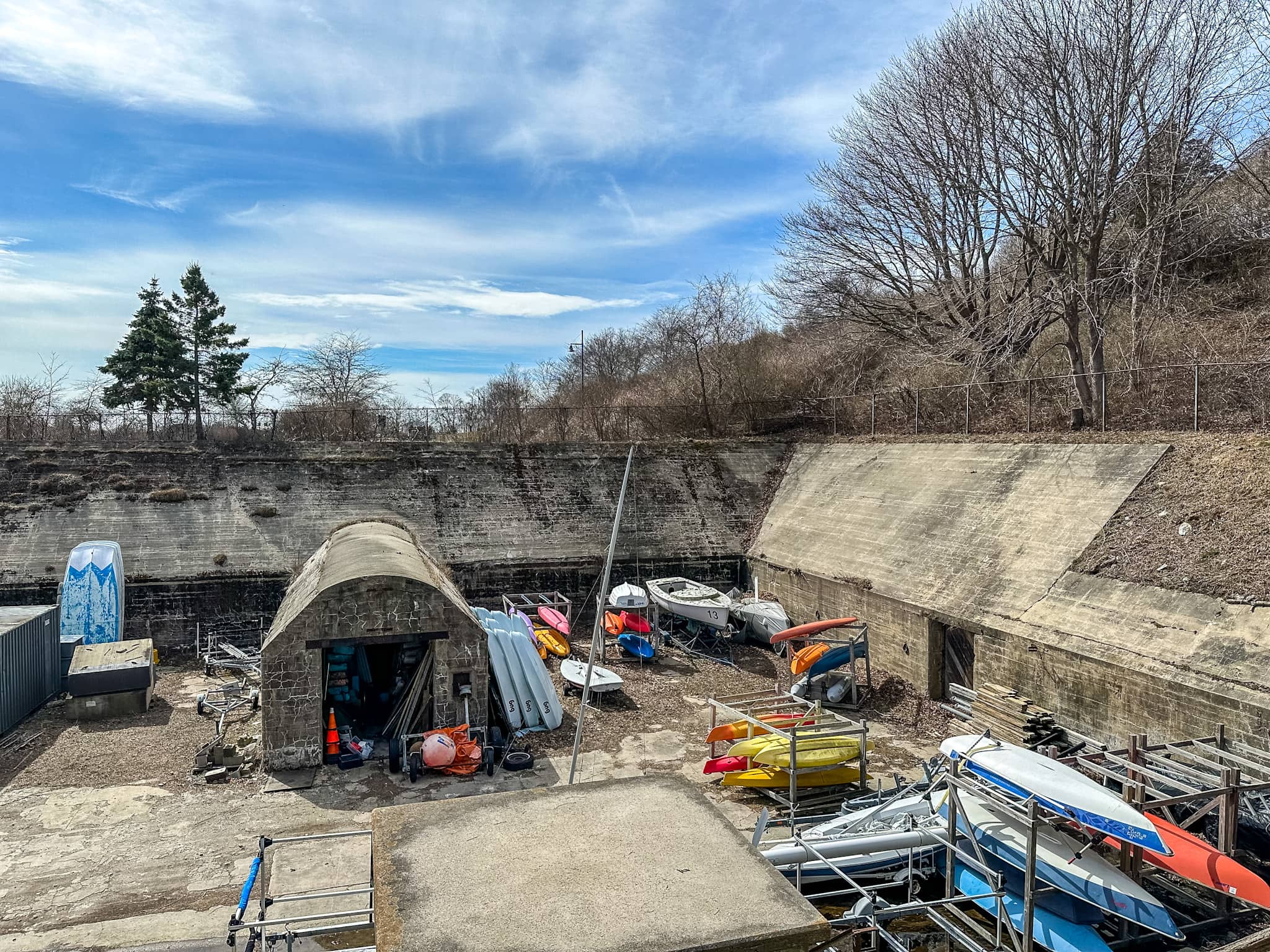
Service During World War I
As America entered World War I, many coastal batteries across the country were stripped of guns for overseas use. In 1918, the Army ordered one of Battery Edgerton’s mortars sent to the Sandy Hook Proving Ground in New Jersey to test its suitability for railway mounting. Later that year, seven additional mortars were shipped to Morgan Engineering Company in Ohio to be converted for possible deployment to Europe.
By the end of 1918, each mortar pit at Battery Greene-Edgerton contained only two guns. Though most never saw combat abroad, these modifications reflected the evolving priorities of a global war fought far from America’s shores.

Battery Greene-Edgerton in World War II
By the early 1940s, mortar batteries like Greene-Edgerton were considered obsolete. Advances in naval gunnery, radar, and aviation rendered their fixed positions ineffective. On November 14, 1942, the remaining mortars and carriages were ordered scrapped as part of the first major wartime salvage campaign of World War II.
The once-mighty battery fell silent, its firing data booths and mortar pits left empty as Fort Adams transitioned toward new uses during the Cold War era.
What Remains Today
Today, Battery Greene-Edgerton still looms within Fort Adams State Park, directly across from the Rhode Island Public Sailing Center on Fort Adams Drive. Though its massive mortar pits are fenced and closed to the public, much of the structure remains intact. The sailing center now utilizes portions of the battery for storage, helping preserve its structural integrity.
Visitors walking or driving through the park can easily spot the enormous concrete façade from the road and admire its size and engineering. Even behind fences, the battery’s presence is commanding — a rare surviving example of Endicott-Era mortar design.
Visiting Information
- 📍 Address: Fort Adams Drive, Newport, Rhode Island
- 🌐 GPS Coordinates: 41.472222, –71.339722
- 🅿️ Parking: Large free lot adjacent to the battery along Fort Adams Drive
- 🚷 Access: Interior closed to public (use by Rhode Island Sailing Center)
- ⏰ Tip: Best viewed in morning or late afternoon light for photography
Battery Greene-Edgerton is officially listed on the National Register of Historic Places as part of Fort Adams State Park (Ref. #70000014).
Why Battery Greene-Edgerton Matters
Few coastal defenses capture the ambition and engineering ingenuity of the Endicott Era quite like Battery Greene-Edgerton. Its massive mortar pits, complex communication systems, and innovative fire-control network exemplify a turning point in U.S. military history — when science and strategy combined to protect the nation’s ports.
Though long silent, the battery remains a powerful visual and historical landmark within Fort Adams State Park, embodying both the strength and impermanence of America’s coastal fortifications.
Quick Facts
- 🏗 Construction: Sept 1896 – June 1898
- 💰 Cost: $63,350
- ⚙️ Armament: Sixteen 12-inch mortars (M1890 series) on M1896MI carriages
- 🕰 Commissioned: May 1898
- 🔧 Divided Into: Battery Greene (A–B) & Battery Edgerton (C–D) in 1906
- 💣 Deactivated: 1942 (scrapped during WW II)
- 🏞 Location: Fort Adams State Park, Newport RI
- 🏛 National Register Reference: #70000014
Final Thoughts
While Battery Greene-Edgerton may now sit behind fences, its monumental scale still inspires awe. Standing along Fort Adams Drive, you can imagine the thunder of sixteen mortars echoing over Newport Harbor more than a century ago.
For those exploring Fort Adams State Park, this historic landmark is a must-see — a testament to Rhode Island’s vital role in America’s coastal defense story and a striking reminder of the power of preservation.

